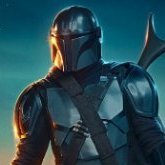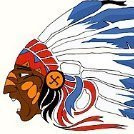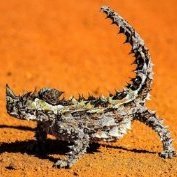Leaderboard
Popular Content
Showing content with the highest reputation on 11/26/2019 in all areas
-
1/32 Tamiya F-4D 'Terrible Tyke'
USMC Herc and 12 others reacted to David Mooney for a topic
Hello all, I have been rather busy working of late but I have found time between working with real aircraft to finish my F-4D. Im sure many are aware that the Tamiya kit is a dream to build and goes together very well, I used Mr Colour paint which I believe are the best on the market at the moment, the colours I used were 303 (FS34102), 310 ((FS 30219) and 320 (Dark Green)……….and black for the bottom :-) Sadly the decals were in a poor state and fragmented as soon as they hit the water, so I purchased the Warbirds Decals set (32009) which were superb and set well on the aircraft and into any details very well and recommended. I didn't like the fit of the intakes to the ducting, so I thought it a far better idea to use the Quickboost (QB 32089) set of intake covers. The seats are aftermarket, but I cant tell you who made them as they came free with the kit (from a certain auction site) All the weapon pylons are removable, this is done using small earth magnets in the wings and pylon locations. I hope you like it, it is certainly my best build so far. All comments are welcome, thanks for looking13 points -
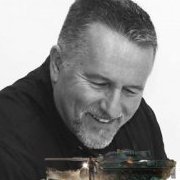
1/32 Tamiya f-16 Zeus
USMC Herc and 10 others reacted to miketippingmodels for a topic
1/32 Tamiya f-16 Zeus The F-16 demonstration team «ZEUS» displays HAF’s airpower to the public and acts as ambassador for Greece, demonstrating the professionalism and the skills of all pilots in the Hellenic Air Force. The team’s goals is to Provide morale within the Air Force, sister services and to the Greek community, to Inspire and recruit Greece’s best to join the service, Strengthen and grow public trust and confidence in the Hellenic Air Force and Retain the quality force we currently have. Team’s callsign during the Demo Flights is «Zeus», representing the father of the Olympian Gods of the Ancient Greek Mythology. The aircraft used for the performance of air shows is an F-16C Block 52+ . This is an OTB build with the exception of the converted tail I used model maker masks for the patterns, so 80% is painted. And I used Reedoak figures11 points -
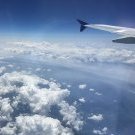
Special Hobby Westland Whirlwind Mk 1
VW Chris 1969 and 8 others reacted to Jan_G for a topic
first test sprues on SH site http://www.specialhobby.net/2019/11/sh32047-westland-whirlwind-mki-zkusebni.html9 points -
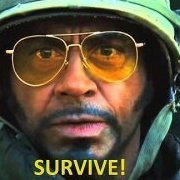
Tamiya 1/32 F4U-1 Birdcage Corsair - Done!
Starfighter and 6 others reacted to Brett M for a topic
Well, only three weeks with no updates, but I have been doing work! Just not as much as I'd like to have. Fuselage is together, horizontal stabilizers on, spine on. I've concentrated on on the wheel wells primarily. Overall shot of progress (not glued together yet) Riveting and seam smoothing.....I hate riveting, I don't think I do a good job with it. Wheel wells. MRP Light Grey followed by some minor chipping done with Tamiya XF-4 and an oil wash for "dirt" And finally, oil coolers in progress. Comments, critiques, suggestions.....all are welcome! Brett7 points -
Awesome! I just received this in the mail, a kit I've been wanting for quite a while now. Chock full of goodies too! Thanks, Bill, I'll be in touch, you can count on that.7 points
-

EA-18G Growler- Completed
Starfighter and 4 others reacted to chrish for a topic
finally worked up the nerve to tackle the pe. seat belts, (took about 3 hours to bend and fit them) fill in the gun bay vents and fit the cockpit, the top of the ip. is as yet unpainted pending the heads up display frame and reflector. I painted the black parts with Tamiya semi gloss but thinned with Mr levelling thinner, when dry everything supposed to be satin was gloss, I repainted but with the same result, said oh well and shot the whole issue with Vallejo satin. Looks better now. Thanks for looking5 points -
1/32 ZM Henschel Hs-129 B-2......FINISHED
Daniel460 and 4 others reacted to monthebiff for a topic
Thank you all for your kind words gentlemen, I must agree with Thierry regarding the strength of the kit when built up. ZM definitely have a different approach to things but the strength of the airframe is excellent. Not had to much modelling time in the last couple of weeks but still progressing nicely. I am working on getting the fuselage less cockpit assembly as complete as possible at the moment and have the basic wing assembly completed as well as completing the empionage, a word of warning over the stabilizers though as these were a pretty sloppy fit and needed to add packing under them while sat on a flat surface to get everything square. Also I've noted with this kit that it seems to be engineered for the full hatch open look. The MG 151 covers are going to take some really careful fitting to avoid gaps/big steps between the two hatches. Also the MG 17 bay covers are supplied to be fitted in the open position and the builder is required to cut them to fit closed. Got some decent bench time later this week so hopefully get these areas sorted. Regards. Andy5 points -
HKM Meteor, with T7 Conversion
LSP_Kevin and 4 others reacted to Dpgsbody55 for a topic
The bulk of the painting is now done. I still have to paint the wheel wells and touch up a few details but that's a ways off at the moment. First up, masking. Here's a picture of the plane with the canopy masked. How on earth the student pilot and instructor were supposed to see out of this while flying is a mystery to me, especially as the British aviation industry could make an appropriate single piece canopy as on the later Meteor NF14. Cost cutting gone mad!! Here we are with the cockpit masked and the first colour on. This is Mr Color flouro red (171) airbrushed on. It took quite a bit of painting too, so as to build up the colour properly. Half the bottle was used. Lastly, a couple of pictures with the second colour on. The flouro red (dayglo, as it was known) was masked off which took quite a bit of time, especially around the curve on each nacelle, as well as making both sides symetrical. Then the model was sprayed with Tamiya rattle can gloss black. Brass undercarriage arrived, but needs a little fettling. I'm using the kit plastic undercarriage temporarily to keep the painted model clean, and the kit parts are standing up to the abuse quite well. My previous "Meatbox" is still fine after more than 2 years on the plastic legs, so I'm wondering if they're really needed, and I live in a hot climate. However, having bought them, I will use the brass legs. As you can see, this will be an eye catcher!! Next up is to apply a coat of gloss varnish then apply the markings before another coat of gloss. More at that point. Cheers, Michael5 points -
Hi, finally a gallery of my finished diorama with a Messerschmitt Bf 109 G-6 from Hasegawa. Inspiration: Original photograph of black 134 points
-
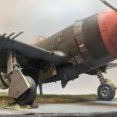
B-17E, 41-2446 - The Swamp Ghost
mywifehatesmodels and 3 others reacted to ChuckD for a topic
Here she is at long last. It's been 1008 days since cracking the box (Feb 19, 2017) that this model has come to fruition, but in the end, I'm very happy with the result. This is The Swamp Ghost In early 1942, B-17E 41-2446 was ferried across the Pacific and arrived in Townsville, Australia on February 20th. In the early morning hours of February 23rd, with pilot Fred Eaton at the controls, she took off as part of a nine ship group that was to bomb Japanese positions on Rabaul. This historic first offensive use of American heavy bombers in the Pacific saw the fledgling group separated by night and bad weather, so that when Eaton arrived over Rabaul, he and his crew were alone. The bombs failed to drop on the first run, so Eaton swung around and tried again. This time the bombs released and he sped away towards New Guinea with Japanese fighters hot on his tail. Shot up and leaking fuel, he knew he didn't have enough gas to clear the Owen Stanley mountains on New Guinea, so he decided to put the aircraft down in a field. The field turned out to be a festering swamp full of 8' tall kunai grass, snakes, spiders, and crocodiles. He and his crew abandoned the bomber, slogged for days through the thick razor grass, and finally met up with friendly natives who were able to get them home over the course of several months. For decades, the bomber lay undisturbed. Finally, in 2004, she was plucked from the swamp and made her way to the Pacific Aviation Museum in Pearl Harbor, HI where she is on display today in her original state. This is my rendition of the aircraft as she would have appeared during her brief stay in Australia prior to her loss. As mentioned in the build thread, the biggest issue was that I had to scratch build the remotely operated belly turret, as the HKM kit only includes the far more common ball turret. I'm not much of a scratch builder, so this was a challenge for me. In the end, I feel it came out pretty well. I was able to use a lot of parts straight from the kit in order to fashion the remote turret. I did throw some Eduard PE at it, though in the end, I'm not sure it was totally worth it. The pre-painted stuff just isn't all that impressive to me, but to each their own. There are no known pictures of the aircraft prior to her loss, so some creative license was taken here and there. I made some assumptions based on pictures of aircraft from the same unit or around the same timeframe. Wherever possible, I referenced photos of the actual aircraft both in the swamp and after her recovery. It was painted primarily with Tamiya paints. The tail numbers were a custom stencil I printed and hand cut. The insignia stencils were custom ordered from Maketar. As it was essentially new when it was lost, I went very easy on the weathering. Kit fit was okay. Seam cleanup was a bear and I ended up having to re-rivet a good chunk of... everything. The turtle deck doesn't like to fit well, but in the end things came out okay. Anyway, enough blabbering. Hope you enjoy. It's been a great ride.4 points -
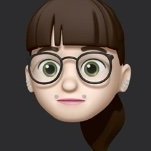
Tamiya 1/32 P-51D Mustang
LSP_Kevin and 3 others reacted to curiouslysophie for a topic
Sorry for the long delay! I finally got some paint on the Mustang after a few false starts. I’ve never done a NMF finish before. It didn’t come out as metallic as I would have liked, but it’s not a bad try I gloss blacked it with Mr Color gloss black and used MRP super silver on the wings and MRP white aluminium on the fuselage. hopefully I can do a better job on the Thunderbolt I have on the go.4 points -
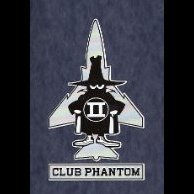
Iranian F-4D 3-6712, 71st TFS, '' DONE''.......
LSP_Kevin and 3 others reacted to Daniel Leduc for a topic
I'm back, and planning to finish this one before Christmas...... After 7 months, trying to remember where I letf it, Oh boy..... and not mentionning along the way I changed my mind for the load with some nice Videoaviation BL755.... Oh yeah. Plus, decided to switch Tamiya TER for some Trumpy I took from a Corsair kit, less chubby and better detail on the brace... Hope you like and have fun, tanks for watching. Dan.4 points -
Thanks for more great insights, Antonio! I don't think I'll attempt the rivet pattern on the bottom but I can fill in one of the hand holders easily enough. I've gone ahead and made my first attempt at painting the spinner. First comes a coat of white. I digitized some spirals off decal sheets and made masks using the Silhouette cutter. For some reason, the DXF files that I export from AutoCAD resolve my spirals (which are comprised of compound curves) into a bunch of straight lines. So the spiral came out a bit choppy in some areas. Using bits of Tamiya plastic tape, I cleaned up the spiral as best as I could. The prop hub was painted too. A preview of the spinner mounted on the fuselage! I'm not 100% sold on my spinner spiral attempt. I'm hoping I can get all of the kinks out with some more touch-ups. Here is the tailwheel after I've sanded a flat spot on it to represent weight on the wheel. The wings have been glued together. Finally, we have the gun cowling with the gun barrels glued into place. I'll have to paint these at the end but it should be easy since I made sure they don't touch the gun troughs.4 points
-
That's it, finished at last. Great looking aircraft. Nice model with some modelling skills required for this early Tamiya 1/32 jet. Mr Colour 305 was the overall FS36118 colour. MRPs colour was too dark and blue for my liking. Decals from Two Bobs. Some Eduard photoetch bits combined with some pieces from the Aires resin cockpit added to the kit cockpit and some additional details scratch built. Seats are from the kit with Eduard steel belts that I am not all that happy with, so might consider replacing them with resin seats with moulded on belts painted up. Lots of Eduard bits around the canopy sills. 5 Eduard Brassin GBU-12's, 6 videoaviation Mk84 slicks, 3 AIM-120 AMRAAMs and 1 AIM-9L Sidewinder make up the weapon load with two external fuel tanks. Wolfpack targeting and navigation pods. The kit only supplies one fuel tank so a quick shout out to LSPers and Peter Gregor responded and sent me another one that he didn't need. Thanks mate. I didn't manage to modify the nose leg, high risk of failure for such a little difference that only aficionados would pick up anyway. I tried using the kit and TwoBobs decals for the slime lights but the curve on the wingtip was too great and I didn't like the colours. I thought that Tamiya XF-76 IJN Green looked pretty close so I used it and wow, looked spot on. Jet pipes are as per the kit with just a few Eduard bits added for some extra detail. Painted with several shades of Alclad and other metalisers brought them to life. I took her to ScaleACT19 early in November and placed Third behind a magnificent Sufa and Supermarine Attacker in Large Scale Jets. Overall I am really happy with my replica of Matt Hall's jet and she takes pride of place in the cabinet.4 points
-
HKM Meteor, with T7 Conversion
Out2gtcha and 3 others reacted to Dpgsbody55 for a topic
Not so much progress to report in this update, but progressed the model is. The resin/plastic fuselage joint is done, though you can never say that for sure until you’ve got paint on it. The cockpit is now complete and it’s approaching the point where I’m starting to consider painting. Here’s some shots of the resin/plastic fuselage joint. I used Tamiya white filler and Mr Surfacer 500 to finish it off. Some CA glue had also been applied before that. The worst area was the lower fuselage and the upper “shoulder” area on each side, but I didn’t worry too much about the top of the fuselage as this will be covered. After this, I spent a little time scribing on lost panel lines before adding the rear cockpit wall and canopy fairing, which are the parts shown below. The picture immediately above shows 2 small flutes filed into the fuselage to help with the fitment of the canopy fairing. Here they are in place. A little more Mr Surfacer has been used again, but the joint is fairly good anyway. The rear cockpit wall goes in first as this helps with the placement of the canopy fairing. Next up, I finished off the cockpit by installing the rear seat and the shoulder harnesses. I’ve also added the gun sight, using the resin Fisher part. The kit part looked a little under done and over large, but both were lacking the glass reflector so I sourced this from my scrap box. I’ve painted it according to some pics found on the net, but I’m not totally happy with it as it’s missing the glass reflector supports that these gyro sights had. Last up are two pictures showing where it is now. The windscreen has been added as has the pitot. The kit part is a little thick, so I cut this off and made one from 1.0mm brass tube, with a shorter piece of 0.5mm brass tube inserted. I fitted the kit part first, then cut of the kit pitot, then drilled a 1mm hole glued my brass pitot into place. Next up will be to fill the gap around the windscreen which doesn’t sit well at the rear, particularly on the left side. However, it does line up well with the main canopy which is why I’ve gone the filler route rather than the filing the windscreen route. After that, I’ll do a little more joint finishing, then basic masking and priming to see if all my work looks any good. If so, more masking, painting the first colour, mask again, paint colour #2… I’m sure you all know that part of the build. Hopefully, next time you see this, it will be painted. Cheers, Michael4 points -
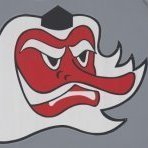
1/32 Icelandic Fine Arts Buccaneer - Detail Shots
thierry laurent and 2 others reacted to Kagemusha for a topic
Incidentally, Alan is planning a 1/32 FG.1, and Sea Harrier...3 points -
Colour is on! Between moving my stuff, work and other distractions there was a small window of oppurtunity to spray some paint. All masks were placed over the insignia and the edges were sealed with liquid mask. Painitng started with the underside - RLM78 from MRP. I let the pictures speak for themselves and I'll save my words for later. As you can see the lower cowl didn't recieve any RLM78. The reason is that I discovered something during painting. I was looking on some photos to determine the demarcaton between RLM78 and 79 and suddenly realized that there was another colour on the lower cowl. I guess it's the typical yellow. What do you guys think? And since I'm already at it: the spinner seems to be in two different colours. One is white and the other one could be red or anything else... I'm looking for pictures of other planes from 2.(H)/14 - maybe there's some information hidden. That's it so far Joachim3 points
-
fiddling with the DML Me109 has taught me that things can often fit when pictures or others might show to the contrary, but that I confess that second picture does not make encouraging viewing it looks like everything needs to be 'shoved up and in' (note use of technical modelling tems) to make those gaps go away??3 points
-
Mistel Combo
TorbenD and 2 others reacted to Bruce_Crosby for a topic
Hi Guys, It's not quite finished, there's nowhere to put a model that big in my little house. So I went to the BMSS model show at Bristol yesterday and bought some paint and this base. It needs sanding and sealing and painting and, well, everything really. The launch trolleys were meant to be used on hard runways so it will either be tarmac or concrete with a few painted lines and some skid marks. Might be a figure or two, might not. Untitled by Bruce Crosby, on Flickr So I'll be back with this one in a while. Regards, Bruce Crosby3 points -
Mistel Combo
thierry laurent and 2 others reacted to Bruce_Crosby for a topic
Hi Guys, Here's the finished Mistel on a white (ish) background. Not the world's best photos but I spend all my money on plastic! Mistel 5 by Bruce Crosby, on Flickr Mistel 5 by Bruce Crosby, on Flickr Mistel 5 by Bruce Crosby, on Flickr Mistel 5 by Bruce Crosby, on Flickr Mistel 5 by Bruce Crosby, on Flickr Mistel 5 by Bruce Crosby, on Flickr Mistel 5 by Bruce Crosby, on Flickr Mistel 5 by Bruce Crosby, on Flickr Mistel 5 by Bruce Crosby, on Flickr Mistel 5 by Bruce Crosby, on Flickr Mistel 5 by Bruce Crosby, on Flickr Untitled by Bruce Crosby, on Flickr Regards, Bruce Crosby3 points -
Part 2: Hope you´ll like it :-) Bye, Bernd.3 points
-
not sure if there is a 10 pic limit per post - is that right? anyway, one last pic...3 points
-
Sprue Brothers Black Week Sale Now In Progress!
Eagle Driver and one other reacted to spruebrothers for a topic
Black Week Sale Now In Progress! - Additional 20% Off All Model Kits with Your Order Over US$30.00 From now until 11:59pm US Central Time Sunday December 1, 2019, receive an additional 20% off our everyday discounted price on all in stock model kits* on any orders over US$30.00. No coupon required - just add to cart and discount will be automatically applied once your order reaches US$30.01. If you were a newsletter subscriber, you would have received one day advance notice of this sale to allow you to have first opportunity to make your selections. To subscribe, go to: http://eepurl.com/3Vuxz Discount applies only to orders placed during the discount period, to in stock items (pre-orders are not included in the sale), and on individual orders only. Also, please be aware that due to the overwhelming response, we will not be combining multiple orders for shipment that are placed between now through December 7 - all orders will be shipped individually as originally received. Note - this sale started with 35,194 different items that are IN STOCK which is the largest in stock selection under one roof (not at our suppliers' warehouse) in North America. * items that are listed in any of our model kit categories2 points -
Looks like the US Revell release of the P-51D-5NA is out
hworth18 and one other reacted to Dave Williams for a topic
https://www.megahobby.com/products/p-51d-5na-mustang-early-version-1-32-revell.html2 points -

Airfix 1/24 Ju-87 Stuka
Anthony in NZ and one other reacted to Gisbod for a topic
Hello all, Here’s my 45(ish) year old classic Airfix Stuka. Considering it’s age, it’s a pretty decent kit. At the time it must have been seriously cutting edge. The engine is particularly good and apart from lots & lots of flash, not bad detail generally. Build thread here: And her 1/72 grandchild: Thanks for looking in, back to the 1/18 Fw190.. Guy2 points -
Hi All! A tiny gap appeared on the topside of the right nacelle, I used some CASCO wooden glue as filler… ---but then I had This major gap on the bottom …. My favorite method how to handle larger gaps; first fill with pieces of plasticard and then lots of liquid glue… Not pretty… But after a few days I can shave/cut off the excessive plastic…. …and it looks already MUCH better…. Stefan2 points
-
hi I am eagerly waiting for this kit , for a while, as every French modelers I hope that details are here , especially in the wheel wells ( not only ) , I have D Hawkins's book too , if you take a look to the gear bays pictures ,and if you like tiny details , these pictures "would frighten" you ... very "busy" area Alain2 points
-

B-17E, 41-2446 - The Swamp Ghost
Alain Gadbois and one other reacted to ChuckD for a topic
Thanks for the compliments, everyone! I appreciate the support through the group build. Probably the most rewarding part of this whole build has been the excitement on my son's face when he saw this: Heavy duty drywall anchors, 6 strands of 15lb line, several thousands knots, some superglue, and a whole lot of prayer...2 points -
Hi all, Here are some photo's of the B52 at the IPMS show last Saturday. I think it is in 1/48 scale, but it is impressive. A cockpit in 1/32 will be interesting, but will be visible in the end? With regards, Rob2 points
-
Thanks, Anthony - very glad that you like it. I have primed the model - first with the grey MRP primer, which gives very thin coverage - enough to show the places needing attention, but no risk to lose any rivet detail. It did revealed some issues, mostly at the front of the engine cowling and at the lower half of the wing to fuselage joint - probably the worst place of the whole kit. Did some additional efforts to make it almost flush. Next I sprayed a thin layer of Vallejo's MECHA COLOR PRIMER Grey, thinned in a 50/50 ratio. Now I think it looks pretty well. Not perfect (wouldn't be me if it was perfect) but well enough to start mixing the paints - going to use MRP colors here. Stay tuned Hubert2 points
-
howdy folks after that interesting interlude (thank you all as I now have a next project which is comforting, love that Fw190 too ) we return to some Mustang madness... ..it's all about getting ready for paint and getting details that need the model to be handled done, before I can flip it over and start mounting the gear, doors and finally start the tailwheel (been putting that off, don't know why...) Radu Brinzan is kindly doing some masks, and Torben did the nose art font for me many moons ago so I am grateful to him too so I should get paint on next time I post.. ...for now, I had to finish all the tailfeathers - mainly adding the tips to the stabilisers and fin and rivetting all the fillets. I did get some PE fasteners done for this, but there are about 60 to do and they are freakin tiny so I chose the lazy way out.. ..I cheated a bit as these are under paint and didn't do them in one piece, I used annealed metal for the fronts, but hte back of the tips where it is profiled to the stabiliser I just bent plain litho to keep the stiffness and maintain the shape.. ..I also painted the prop blades & exhausts - Steve at Model Monkey scaled up his amazing hollow 1/24 set for me and all I did was add weld beads from PVA.. ..the blades are not fixed yet, so excuse pitch or whatever please ..the last bit of airframe work was adding the MN20 loop fitting (I got some great help from the forums on identifying & getting drawings for this ) ..I started by laying down bare metal foil so I can work and things don't stick to the fuselage.. ..then I CA'd a disc of litho and the profile of the bottom mounting plate.. ..some P38 filler built up the shape and the whole thing was popped off and cleaned up.. you can also see here a sheet of annealed litho 'hinged' off the fuselage so I can start covering the shape to make the mounting plinth.. ..done, rivetted and drilled to accept the loop mounting plate.. ..the loop fitting itself was made from profiles & filler and a 1mm brass rod bent around a 10mm punch.. ..I think it's bronze green, so I went with that - it's not fixed yet, and nor are the bolts that hold it in place added.. ..thats all for now TTFN Peter2 points
-
Armed with new information, I set about creating the mountings for the radio equipment removed from the ground based Zero's. Ryan's photographs proved very helpful, and this article http://www.j-aircraft.com/research/gregspringer/radios/radio_systems.htm answered the one question that lingered, how the radio's were attached to the mountings (bungee cords as it turns out). The lightening holes already portrayed in the kit were drilled all the way through, and more added where necessary. As a general rule inside the Zero structure, if there is a flat piece of Extra Super Duralumin (ESD) anywhere, drill a hole in it. You may notice that I replaced the kit's gear and flap levers, since they were too long and the prominent knobs a little under-represented. I added a horn cut out button between these as well as the hydraulic plumbing. The RDF/Radio selector switch is gone, the air/fuel mixture analyser added, and the light has been attached. The arrestor-hook release lever was fashioned from aluminium as the kit one is the wrong shape entirely when seen from the top. That should be about it. Part E-4 is the handle I'm referring to, and it doesn't have a second bend in the lever. You can see that the Tamiya guys knew about the radio mountings, when you look at the corners of the right hand set in the plans. The left hand sidewall got quite a bit of attention on the throttle levers (which are very basic shapes in the kit), as well as electrical wiring galore. The trimmer chain is sadly just styrene strip, and will have to be painted to look like a chain. The side console (N-11) is largely modified according to the tweak list and Ryan's photo's. Quite a bit of time was spent cleaning up the rudder pedal moulding. The rudder bar is more clearly separated from the pedals, thin monofilament "twine" wrapped around the bar, and the foot restraints added. The adjusting screw handle actually has six spokes, but my eyes and fingers could only manage four. Hydraulic plumbing in the Zero seems to follow a similar pattern of bends and routing in many of the photographs I have seen. I have tried to capture a similar pattern. Starting to get busy. I hope the seat still fits...2 points
-
small update on my 1/32 Me109 E-4 Trop 'Black 8'... I used to be a 'dipper' - a clear part Future dipper that is - but results were erratic and it was only when i investigated no-blooming CA and also saw one of Will Pattison's canopy polishing vids that I thought "I don't need that **** any more"! All of my DML E canopies have 2 ridges / seam lines on the rear canopy part. I didn't use a scalpel / blade - but probably could have done - but achieved pretty decent results with some sanding and then polishing with some T-Cut (automotive polish). So the canopy can now be masked inside and out and we can move on. and after buffing... A few other construction notes... The rudder involves some photo-etch to simulate the hinge (in fact most of the control surfaces have something like this). I thought this was a bit gimmicky but you can actually see a bit of PE once attached, so it is worth going through with. For some odd reason, the bottom hole in the tail does not match up with the PE hinge part on the rudder - not even close. A new hole was drilled - no drama. Depending on the scheme you are doing, it may be worth leaving the rudder off and painting separately eg a yellow tailed bird (mine isn't). The elevators also had the PE hinge thing, but the piece which fits over it leaves a large gap on the tail plane which needs to be filled. I used some Deluxe Materials putty smeared down with my finger, having masked the trench that needed filling. Looks a bit shoddy but it's dead quick and once the taoe is peeled away you have a very neat bit of putty and only minimal sanding. Maybe there are better ways but this worked quite well for me and i will be using this technique again.2 points
-
Thanks Kev and Spyros. The seat finally got some more attention. This video is very instructive regarding the look and feel of the real thing. I decided to replace the kit seat's upper mounting support as well as add the harness attachment points. The underlying design philosophy of "lightness" is evident in many places on the Zero, and particularly in the seat. I don't think it would pass any modern safety tests . Since the harnesses are attached to the seat only, in a typical forced landing scenario, the momentum of the pilot separates the seat from its mountings and an instrument rash is pretty much guaranteed. Look at how the seat separated from its upper mounting in this photograph. Excuse the jumbled sequence of this build, but I am really just going on what appeals to me at the moment. Ryan points out the difference in the shape of the tailwheel opening for Mitsubishi and Nakajima built aircraft in his tweak list. Here is my attempt at the Nakajima shape. The kit has various things that are meant to move or retract, but I prefer to avoid the complications they inevitably cause. The tailwheel stop for the fully extended position in the kit is too far "retracted" to my eye so I have cut it back to allow a more extended look (I also skipped the installation of the retracting mechanism). The reference photo is the A6M2 in Dayton, which is a Nakajima build. Now into the cockpit. The first thing that will need some attention is these ejector-pin marks, since they are visible behind the sidewall structures. And then after many puzzling looks at reference photographs, I discovered that Mr Tamiya didn't insist on a replacement for the right cockpit sidewall from the original kit, which is an A6M5. The kit part looks pretty much like this (without the holes). Beware the internet, some would have this photo as an M2, M3 and a "Rufe". I believe it is the Flying Heritage Collection's A6M5 (c/n 1303?). I chopped out the offending mounting trays, as well as the air vent duct which is an ugly semi-round moulding, and then replaced the stringers with some resized brass square-tubing. This now looks a bit more like an A6M2 sidewall with its radio's, Morse-code key, and DF antenna controls removed. Now for all the actuating levers... Sean2 points
-
HKM Meteor, with T7 Conversion
Dany Boy and one other reacted to Dpgsbody55 for a topic
Well it's been longer than I expected, for which I apologise. The trip to Melbourne was great, and I thoroughly enjoyed Motorclassica. If you're a car nut like me, I can highly recommend it. And my favourite car on display won the concours too. This year marks the centenary of Alvis, Bentley and Citroen, as well as the 60th aniversary of Mini, so lot of each of those on display, as well as plenty more. https://motorclassica.com.au/features/concours-delegance/australian-international-concours-d-elegance-2019-winners/ But back to the model. I haven't quite got to where I wanted to in the last update, but I'm close. This first shot shows the finished engine installed in the left nacelle, and the right engine still a work in progress. Next up is the rear jet pipe and exhaust installed, and the right hand engine has progressed. I've also glued the flap in place in preparation for the top wing to be attached. Next, the intake section has been glued in. The next shot shows the top wing now glued in place, with the now completed right hand engine laid in place, but not yet glued. This was done tonight. The paint is still wet on the jet pipe, and the front engine mounts have only just been glued on and they're presently setting in place before I glue the engine in tomorrow. (I hope!!) Here's a shot looking in the front of the left nacelle, showing all the ducting and a little of the engine detail. This is so much better than the one piece blank provided in the kit. Lastly, here's a picture of the right hand engine all complete. Again, I've added more detail other than the plumbing around the front of the engine, in particular all the fuel delivery pipes to the combustion chambers, as well as a couple of other wires which I suspect are combustion temperature related. Hopefully this weekend I'll get time to install this permanently into the wing, together with the rear jet pipe and front intake, then glue on the right hand top wing. I was going to leave the left top wing off and install the left engine before gluing the top wings on, but an accident with the left engine coming out of the wing while I was aligning the partially complete right engine caused a change of heart. Thankfully there was very little damage to the left engine and all is well now. It can't go anywhere once the top wing is in place. The Fisher kit does provide improved re-profiled nacelle fronts (leading end), but with the Profimodeller including intake ducting I decided that it would be too much of a pfaff to cut the front of the nacelle off, line up the new Fisher part while also trying to line up the intake ducting. I'd need three hands!! The front ducting has to go in as it also has some of the nacelle inner structure attached which I think adds more to the model than what looks to my eye as a tiny difference in the front of the nacelle profile. So the decision was taken to leave them out of this build. That's it for now. Hopefully more in the next week or so. Cheers, Michael2 points -

KH T-6/Harvard Kicked Up A Notch: Apr 14/20: Finished!
jimbo reacted to chuck540z3 for a topic
November 21/19 Time to build another model! As some of you know, my last model was the 1/32 Kitty Hawk F-5E, that fought me every step of the way. For those who might be interested, that build is here: https://forum.largescaleplanes.com/index.php?/topic/82157-132-kitty-hawk-f-5en-kicked-up-a-notch/&tab=comments#comment-1156382 I’ve taken 6 weeks off from modeling to re-charge my modeling mojo and do some research on my next project, which is the 1/32 Kitty Hawk T-6 Texan that will be slightly modified to a Canadian Harvard. I have always built fighters and bombers to date, with the following models completed so far: 1/32 Revell F-15E 1/48 Tamiya Lancaster 1/32 Tamiya F-14B and F-14D 1/32 Tamiya F-4J and F-4E 1/32 Tamiya F-16CJ 1/32 Academy CF-18A and CF-18B 1/32 Trumpeter A-10C 1/32 Tamiya F-15C 1/32 Tamiya P-51D 1/32 Trumpeter P-38L 1/32 Tamiya Spitfire Mk IX 1/32 Kitty Hawk F-5E/N Why a boring Harvard after these iconic fighting aircraft you might ask? Three reasons: 1) I have run out of room to display them, because at least 6 of them are 2 feet long or wide. As I build new models like the recent F-5E, something has to go and I have already tossed in the garbage the Revell F-15E and the Academy CF-18A, because they weren’t very good and took up a lot of room. I don’t have the heart to throw anything else out, but a smaller model can still fit in my display cabinet. 2) I want to build something simple for a change. Every single model that I still have is heavily modified and took at least 8 months to build, with the F-4E taking 18 months. While rewarding in the end, it’s sometimes difficult to stay dedicated to the same model for a year or more. 3) I grew up with yellow Harvards buzzing loudly overhead, sometimes right over my house. For those who know Calgary, we used to have a RCAF training airport called Currie Field (renamed Lincoln Park), which I used to live near when I was 8 years old. To make ends meet, my parents rented out a basement suite in our house and probably because my farther served in the RCAF, we always had RCAF pilots and their families renting that suite. Long before the airspace rules and regulations that we have today, many of those pilots would fly fairly low over the house, dipping their wings back and forth to say “hello”, often in Harvard Trainers. As a result, I’ve always loved the glossy yellow and flat black paint scheme of this trainer- and aircraft in general, hence this addictive hobby most of us share for similar reasons. What I was unaware of until I thumbed through this book below, is just how many variants of the Texan/Harvard there are. There are at least 80 different versions, each with subtle differences, that were exported to about 50 different countries- and even Japan received a couple in 1939 before the War. I’m finding it difficult to find pics of a single Harvard inside and out as a reference to replicate. For instance, while I can find dozens of pics of instrument panels, finding pics of the sides of the cockpit and especially the back area are super rare. FYI, there are several Harvards in flying condition just north of Calgary at Red Deer at the Canadian Harvard Aircraft Association, but each Harvard is a bit different from the rest. Their website is here for those who might be interested: Canadian Harvard Aircraft Association So what do I build, exactly? The answer is, “whatever I feel like”! Since accuracy is not important to me for a change, I’m going to use the best of the kit and aftermarket parts that I can find, with no concern whatsoever as to what is “correct”. To help in this effort, Jari (Finn) has found me this pure gold publication in pdf from 1942, which are “Erection and Maintenance Instructions” (try not to laugh) for the T-6 and Harvard variants. While all pics are in black and white only, there’s a pic of just about everything I will need. T-6/ Harvard Erection and Maintenance Instructions While my subject is somewhat generic, I’m going to use this particular Harvard from the Canadian Warplane Museum in Hamilton as a guide, mostly because the kit has decals for it and I can’t find any other Harvard decals in 1/32 scale. I’ll likely use the insignia decals and paint the code letters instead: There’s really good pics of the engine as well… To add some nice detail, I have the Eduard “Big Ed” set, along with a few other aftermarket items that I have on order, like the AlleyCat rear canopy glass, that is specific to Harvards. Although I’m not a fan of using Eduard “stickers” in cockpits, because it’s sort of “cheating” and often looks unrealistic, the kit instrument panels and decals are pretty much stickers already. While I could use Airscale instrument decals on the kit parts instead, the Eduard IP’s look fantastic (below), so I’m going to use them after all. One important thing to do with these stick-on parts is to knock down the shine with dull coat as I have done already, because the original finish is always too shiny. My last Kitty Hawk F-5E kit had fairly good surface detail, but the parts did not fit together very well and there were ejection pin marks and seam lines everywhere. This kit follows that same theme in spades so far. Here is the interior face of the cockpit cage on both sides that you can mostly see. I count about 45 pins marks to fill, and there are NONE on the outside that you can’t see. Stupid planning! What makes filling and cleaning up these pin marks so difficult is that most of them are on thin curved surfaces that are really difficult to sand. Arrgh! Dry fitting some of the parts, there’s a horseshoe shaped part (D31) at the rear that doesn’t really fit anything. There’s a gap at the bottom of this part and the sides do not fit well at all- and it sits back from the curved part below it, with nothing that really anchors it into position. Checking other builds of this kit, the fit of D31 is all over the place and most times lumpy, with the part often deleted completely. Thankfully, the manual above has a pic of what it should look like on Page 248- a slide for a rear gun, which is obviously optional. This means that it should be elevated from the rear deck, but should fit more flush on the sides. While Canadian Harvards likely don’t have this rail since they don’t have rear guns, I kind of like the added detail, so I want to keep it. After a lot of trimming the sides, it fits much better, while leaving the rear gap…. After this small modification, it fits much better when viewed from above. Note the 4 sanded off pin marks on the back deck that are huge, while there are no pin marks on the bottom that you can’t see. I guess that is why some modelers refer to these kits as made by $____Y Hawk! Time to start painting! Switching topics at the risk of obvious self-promotion, I just received a copy of the January 2020, FineScale Modeler magazine which has my recent Spitfire Mk IX on the front cover, along with 8 pages of coverage in it as Part 1 and a similar number of pages in the upcoming February issue as Part 2. During this same time frame, my F-15C Eagle Aggressor will be featured in a FineScale book on Modeling Aircraft. In our fairly lonely hobby of “making toy airplanes” as some of my friends and relatives will say, this is pretty cool and it makes all the hard work I put into these builds worthwhile. Thanks for following along and indulging me. Cheers, Chuck1 point -
I finally found and built one after all these years of waiting! OOB except for GT Resin intake; the intake looks seamless to the inlet fan. I used Microscale liquid Decal Film since I didn't want any unexpected incidents with the kit decal. Fuselage is painted in Testors Extreme Lacquer "White Lightning" and "Wet Look Clear"; the "WL" has a pearl effect, really makes the TB shine. I was worried about the stand keeping her flying, but it works perfectly.1 point
-
Basic Question
Out2gtcha reacted to Maybach_man for a topic
Hi All; I have been a lurker for a while. The forums are fascinating and the quality of the work in the threads is amazing. I have built many models..some years ago, mostly ootb and not built or painted accurately. I am now amassing tools and stuff to try to build a few models to a better standard. So a question... what is best assemble subsections and paint....or paint all items on sprues and then assemble? Thanks1 point -
I went and saw it by myself yesterday morning. Just me and another solo middle aged guy in the theater . I loved it. Yes there were inaccuracies small and large, and the action sequences were definitely overdone. Would have been interesting to see the CGI dialed back about 50% for a more realistic effect. I agree they compressed the actual battle to the point that they had to cut some things out. However, the screenwriters obviously wanted to tell a cohesive story of the 7 months from Pearl to Midway, which means the actual battle had to be somewhat truncated, or else it would have been 3 hours long. One ommission that I don't understand, however, is Dusty Kleiss. He was on board the Enterprise as a member of scouting 6, and received the Navy Cross for his actions on 6/4. Especially since they mentioned that Best was "one of only two pilots to score direct hits on multiple carriers in the war", I thought it strange that they didnt even mention the second. Actually, if you look at the roster of pilots in the ward room, his name isn't even mentioned among the squadron. I wonder if for some reason his family didnt authorize the use of his name and likeness for the film.1 point
-
Already made my purchase, one new Tamiya Lightning and 1 new Spitfire MKI, they may not be LSP’s but it is Jennings fault. I already have his Spitfire MKI sheet and he has the P-38 sheet on the way. How can I stop myself when they release all those increadible decal options.1 point
-
Tamiya 1/32 P-51D Mustang
curiouslysophie reacted to dennismcc for a topic
As one who avoids NMF finishes that looks pretty good to me, not warbird shiny, just NMF. Cheers Dennis1 point -

Tamiya 1/32 P-51D Mustang
curiouslysophie reacted to Brett M for a topic
Looks like the paint turned out pretty good to me, nice work. Seems you and I both had a big gap in updates lol1 point -

1/32 Hasegawa Bf109K-4 Weisse 8
Antonio Argudo reacted to MikeMaben for a topic
Not sure that that was standard on Ks. I've seen lots of K drawings that have 2 hand holds. Anyone have a K drawing that has one ? Just curious.1 point -

Messerschmitt Bf 109 G-6, 2./JG 51, Black 13
109 reacted to Rod Bettencourt for a topic
My gosh is that good!!! Thank you for sharing this. Rod1 point -

Basic Question
MikeC reacted to themongoose for a topic
Glad to hear you've come out of the shadows Maybach_man I started doing the same thing a few years ago when I joined the forum. For the most part with aircraft I've found it best to paint sub-assemblies. If a sprue gate is attached to a point that won't be seen at all, not even an edge, then I will leave it on the sprue to paint but those are few and far between. Then occasionally you have to paint in sections, like the fuselage behind the intakes on an F-18. There's just no way to get in there once the intakes are on so you have to spray some primer and top coat in that area ahead of time. I look for natural break points like panel lines to make my tape lines at in these cases. I've seen other guys make up parts in groups and then attach them at different point in the build process. I've tried to follow this method lately. Reason being it got complicated trying to tape things up, like landing gear, while spraying the body of the plane. That's been one of the valuable things about the forum, being able to see the many ways people go about things. The process has been as important as the painting because it's kept be from creating "collateral damage" and ruining something I'd already done. Chris1 point -
I think once I started researching all the differences the T-6G FAC's had, I came to the conclusion that I could do all the mods required and had struck out for decals. See below. If you know of any bits that would at least help me replicate the drop tank, I'd be very interested. Sorry to go OT on this thread...1 point
-
Nice model Peter, good to hear the RAM panels are going to be the same colour, about time aircraft manufacturers were more considerate of modellers.1 point
-
yeah I saw that, thanks i effing hate scribing lines at the best of times, and only saw it after I had put the wings on, so the omission will stay on this one I'm afraid anyway, some additional 109 construction notes which may help people... I chose to go quite off piste from the instructions once more with the wing construction, and attached the top half of the wings to the main spar and the fuselage just on their own. The reason behind this was to focus on the wing root join, which I did not want to have to re-visit after gluing. Sadly I forgot to take a pic of just the top halves in place, but it worked out fine and was actually very easy. I also painted and weathered the wheel wells as it seems easier this way. The flaps require a small area to be cut out if you want to show them dropped (which I do); see pics for this. Finally, I also painted the grills and inside of the radiators before fixing in place. kit barrels chopped off and drilled out to accept Master MG FFs which will be inserted right at the end covers in place and most of surrounding painting done when it comes to priming and painting the rest of the kit, these areas will be avoided i will add the small brace at the opening after main painting is done, as filling this area with masking sponge / tissue paper etc will risk snapping them off even if i replace with brass rod (which i intend to do) that's all for now1 point
-
I think I'm beginning to hate you ...1 point



